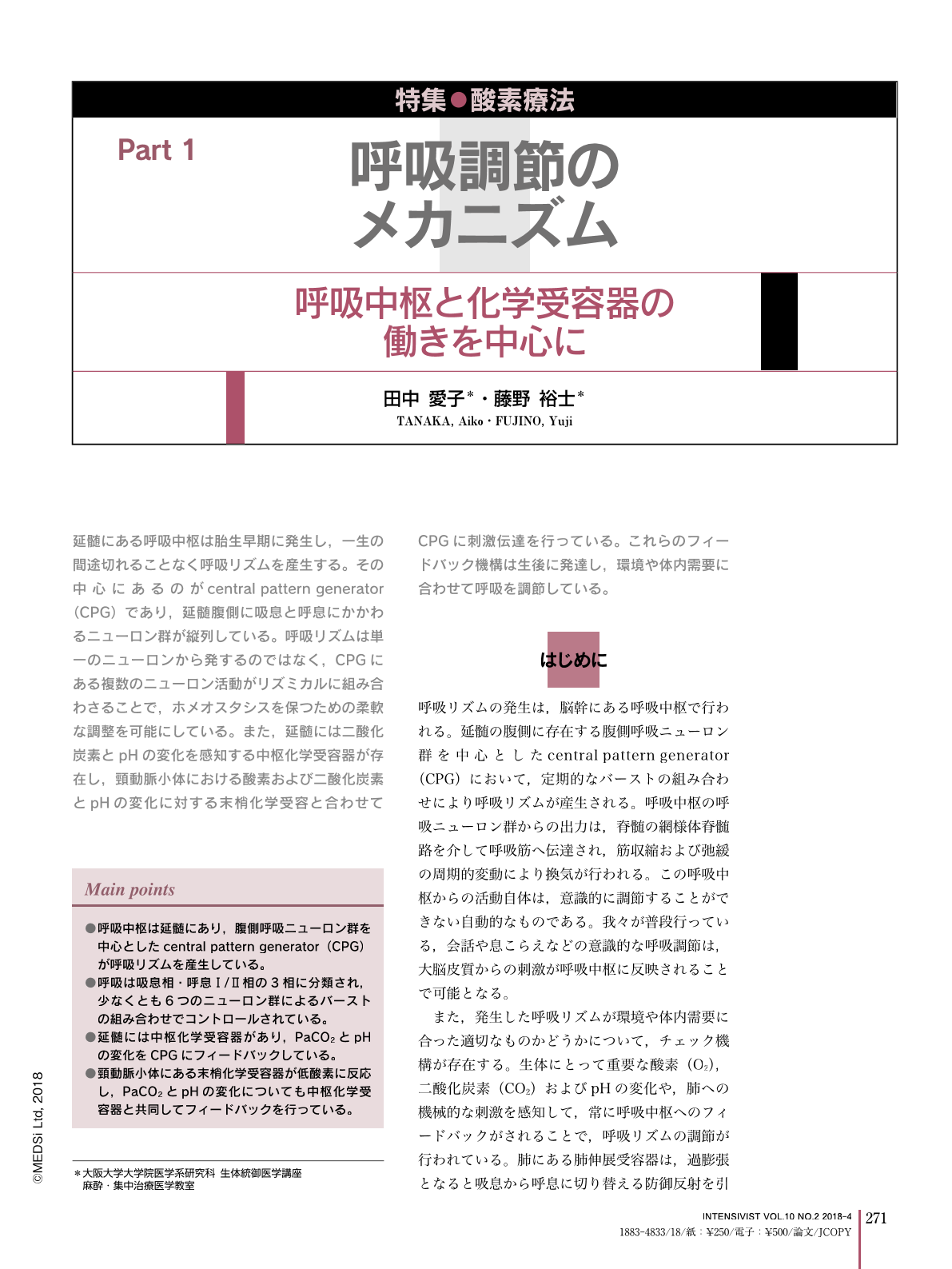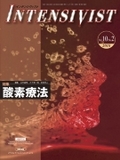Japanese
English
- 有料閲覧
- Abstract 文献概要
- 1ページ目 Look Inside
- 参考文献 Reference
- サイト内被引用 Cited by
延髄にある呼吸中枢は胎生早期に発生し,一生の間途切れることなく呼吸リズムを産生する。その中心にあるのがcentral pattern generator(CPG)であり,延髄腹側に吸息と呼息にかかわるニューロン群が縦列している。呼吸リズムは単一のニューロンから発するのではなく,CPGにある複数のニューロン活動がリズミカルに組み合わさることで,ホメオスタシスを保つための柔軟な調整を可能にしている。また,延髄には二酸化炭素とpHの変化を感知する中枢化学受容器が存在し,頸動脈小体における酸素および二酸化炭素とpHの変化に対する末梢化学受容と合わせてCPGに刺激伝達を行っている。これらのフィードバック機構は生後に発達し,環境や体内需要に合わせて呼吸を調節している。
Main points
●呼吸中枢は延髄にあり,腹側呼吸ニューロン群を中心としたcentral pattern generator(CPG)が呼吸リズムを産生している。
●呼吸は吸息相・呼息Ⅰ/Ⅱ相の3相に分類され,少なくとも6つのニューロン群によるバーストの組み合わせでコントロールされている。
●延髄には中枢化学受容器があり,PaCO2とpHの変化をCPGにフィードバックしている。
●頸動脈小体にある末梢化学受容器が低酸素に反応し,PaCO2とpHの変化についても中枢化学受容器と共同してフィードバックを行っている。
Breathing is driven by neural activity generated within the central pattern generator (CPG), a neural network located in the medulla oblongata. The respiratory rhythm generated in the CPG provides motor output through premotor efferent networks in the brainstem and spinal cord to promote pulmonary gas exchange. The physiological mechanisms underlying the generation and control of the respiratory rhythm were investigated for decades and new knowledge recently obtained. The process must respond to chemosensory modulation to maintain oxygen (O2) and carbon dioxide (CO2) homeostasis in the blood and tissues. Peripheral and central chemoreceptors monitor the arterial partial pressures of O2 and CO2. Their stimulation activates respiratory and autonomic reflex during conditions of hypoxia and hypercapnia. In this review, we describe the neural interactions of respiratory rhythm generation in light of recent findings.

Copyright © 2018, MEDICAL SCIENCES INTERNATIONAL, LTD. All rights reserved.


